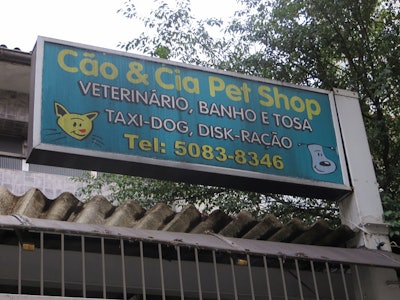
In the Latin American pet food market, the traditional sales channel – independent pet specialty – is the retail format with the longest presence and largest number of stores in the region. Understanding its performance, characteristics and key incentives are of foremost importance for local pet food manufacturers.
Despite the increasing popularization and proven effectiveness of digital marketing to foster the omnichannel concept within pet food products, several manufacturers still rely on traditional channel formats as a primary source of profit.
Small independent pet stores still reign
As online sales are just emerging and not yet a market force, and while specialists and veterinarians are relatively smaller players offering different consumer experiences, pet food producers are continuing to get their products noticed using regular store shelves.
Mom-and-pop stores and small independent pet specialty stores – particularly ones found in Brazil – are ubiquitous. Moreover, these outlets possess a few competitive advantages over supermarkets, with omnipresence and convenience the two most relevant. For instance, Brazil has more than 1 million small independent stores, while Mexico is reaching 800,000.
Corner shops generally offer low-priced pet food products in smaller packaging sizes. The closeness and convenience are appealing features to pet owners, who likely prefer acquiring smaller amounts on a frequent basis. Furthermore, such stores usually offer pet food in bulk, providing savings to consumers.
Roughly, the market share of this traditional channel may approach 40% or 50% of the total volume of pet food sales in the region. However, only companies owning a wide net of distributors and intermediaries can reach many stores, thus maximizing their potential in that channel.
The modern mass retail channel drives innovation
On the other hand, the modern channel comprising some of the biggest global mass market chains, such as Walmart and Carrefour, or local chains like Casino, Oxxo, Soriana and Extra, are likely dominating another half of the pet food market in the region.
Given the intrinsic differences in price and consumption frequency between these two largest channels, pet food manufacturers usually prefer to participate in just one. Only a minority of producers can play in both channels simultaneously.
Therefore, a relevant question is, how can tradition and novelty compete and foster growth simultaneously? Perhaps the success of one channel comes at the expense of the other. Often, local producers are asking the same question.
Regardless of the right answer, the traditional channel has ample room for future development. However, the emerging digital experiences for consumers are better suited to the modern channel, which is the one driving innovation.
Ultimately, the key point for Latin American pet food producers is understanding how to compete effectively in both marketplaces while adopting new technologies to provide better buying experiences.
















